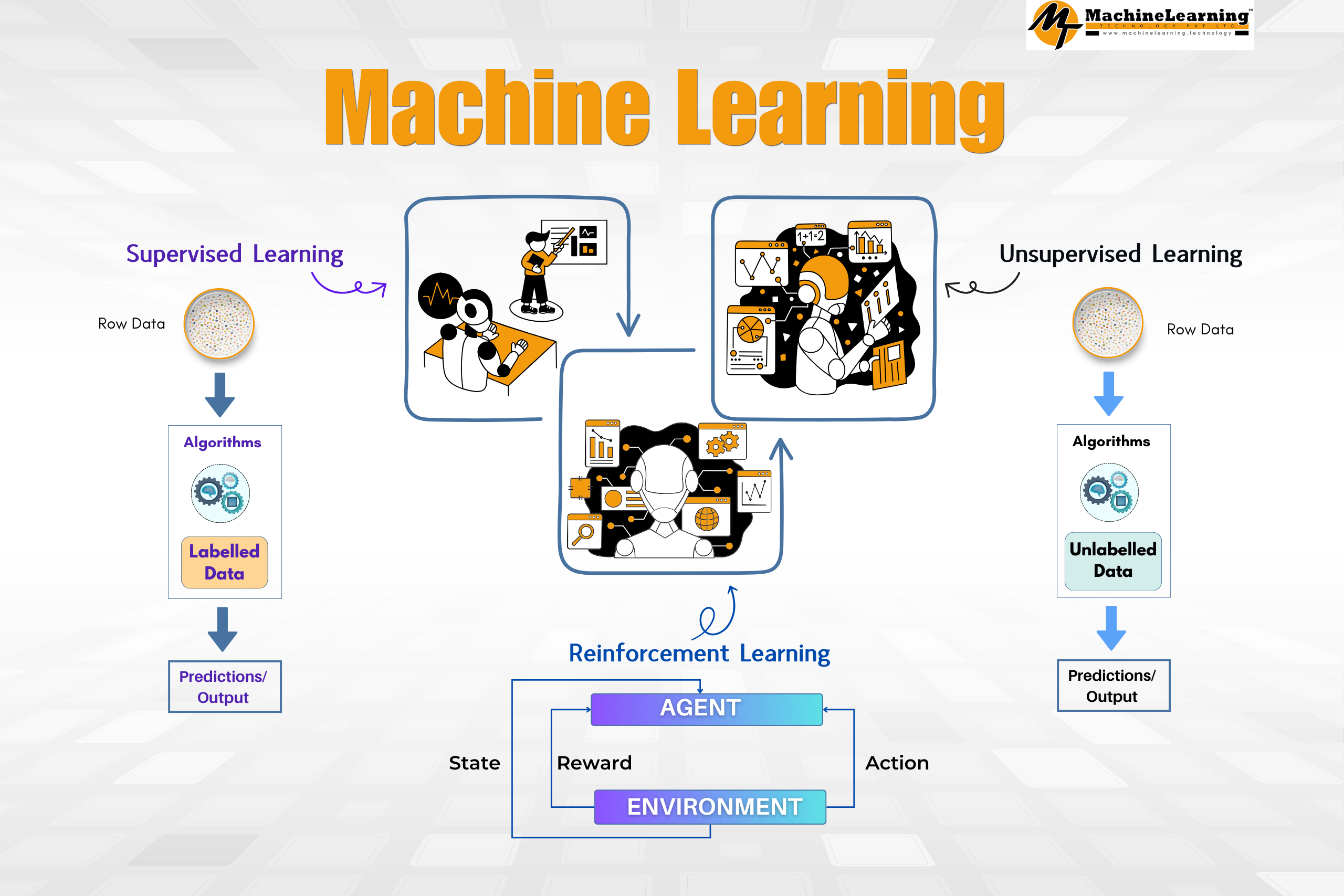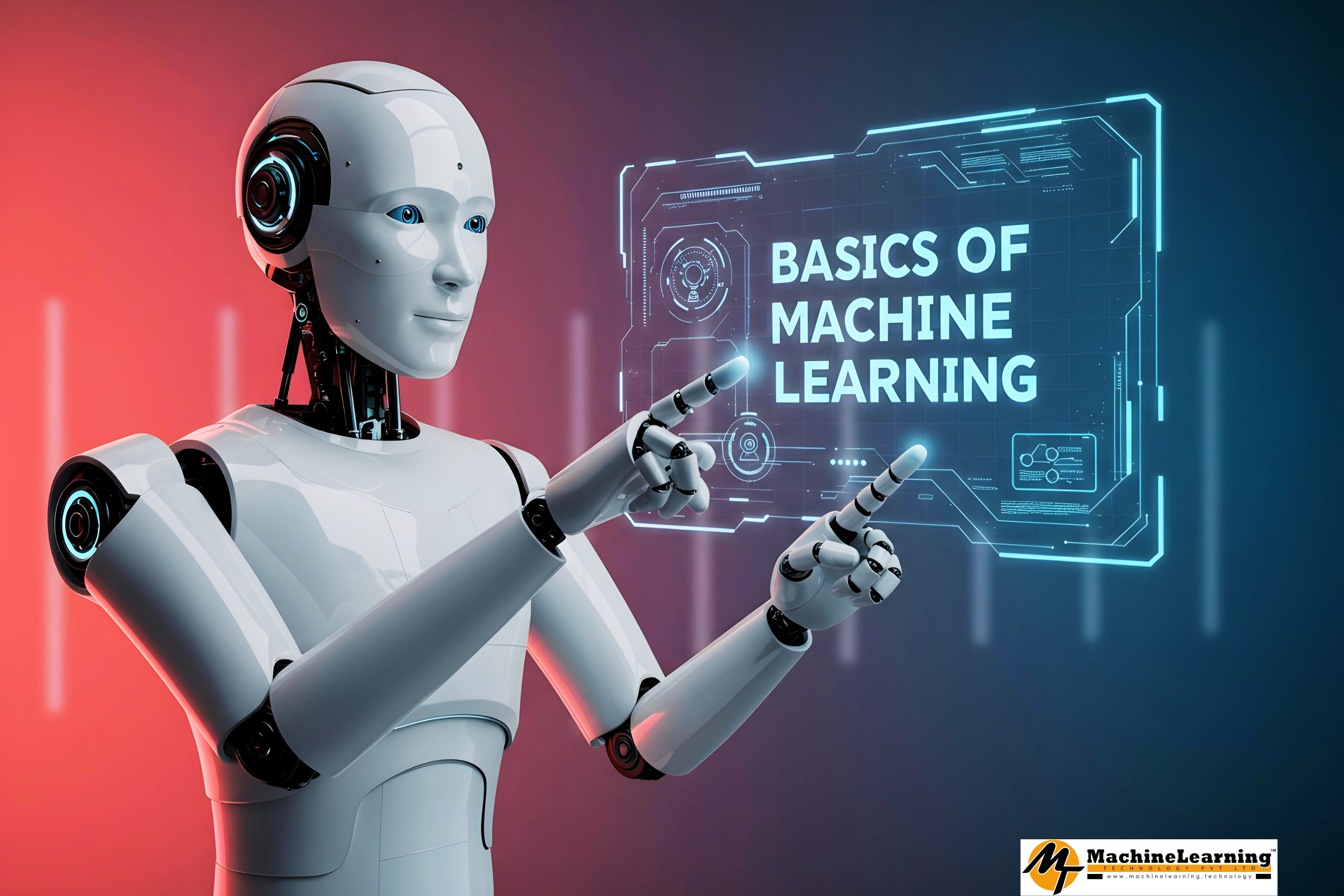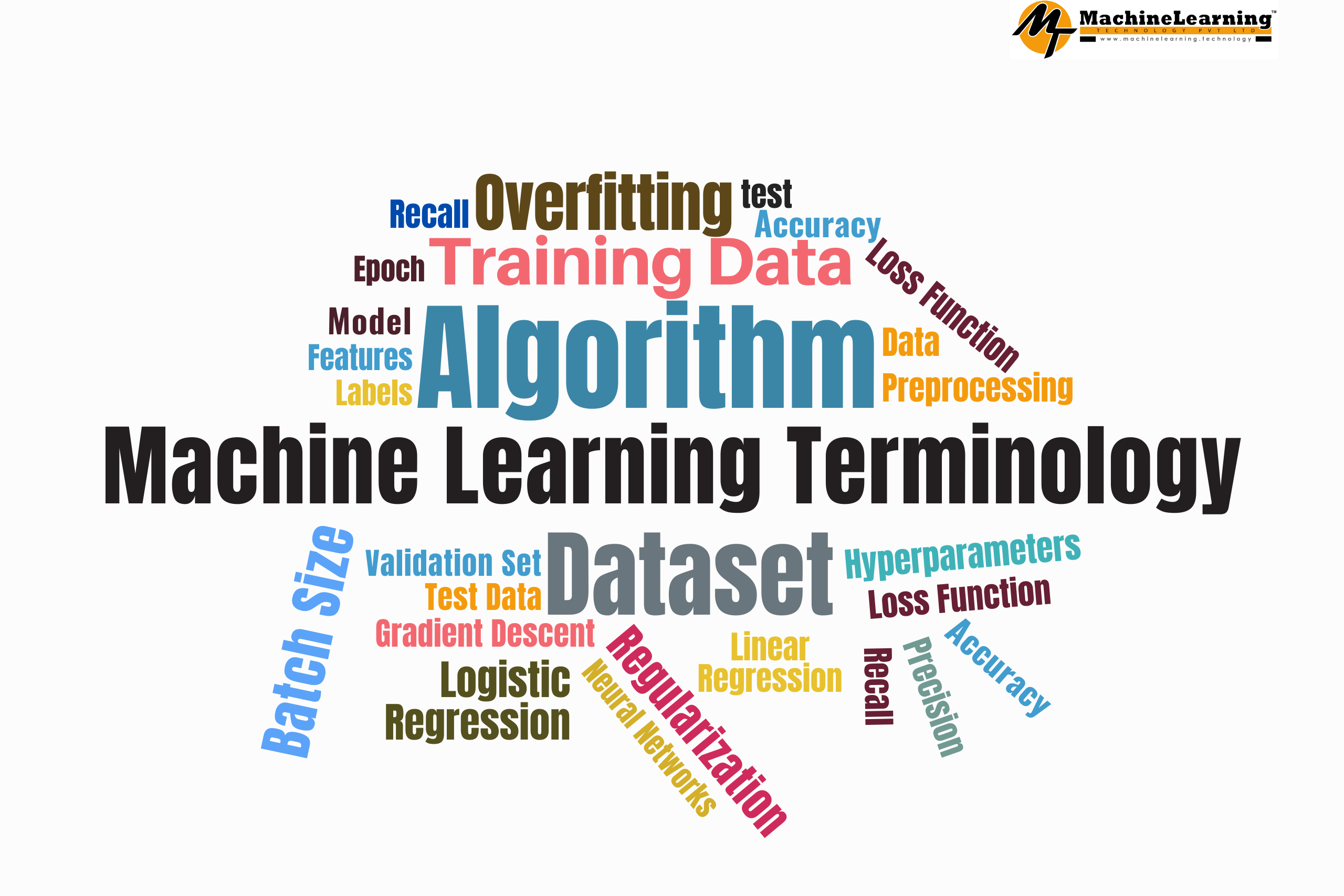Introduction
Machine learning (ML) is at the core of artificial intelligence, transforming how industries operate and how we interact with technology. From personalized recommendations on Netflix to robots assembling products in factories, ML enables machines to learn from data, adapt, and make intelligent decisions. But machine learning isn’t just one concept—it is divided into three primary types: supervised learning, unsupervised learning, and reinforcement learning.
Each of these types addresses different challenges, uses distinct techniques, and applies them to specific real-world problems. Understanding how they work and how they are used is essential for anyone entering the field of machine learning, whether you’re a student, researcher, or professional.
In this comprehensive blog, we’ll explain these three types in depth, explore how they function, provide real-world examples for each, and discuss how they can be combined to create advanced AI systems.
Let’s dive into the fascinating world of machine learning!
What is Supervised Learning?
Supervised learning is the most commonly used form of machine learning. In supervised learning, the model is trained on a labeled dataset, meaning that each input is paired with the correct output. The algorithm learns to map inputs to outputs, enabling it to predict outcomes for new, unseen data.
How It Works:
- The algorithm is given a labeled dataset containing input-output pairs.
- It identifies patterns and relationships in the data during the training phase.
- The trained model is then tested on new data to evaluate its ability to make accurate predictions.
Real-World Examples of Supervised Learning:
Fraud Detection in Banking
Banks use supervised learning to detect fraudulent transactions.
- Input Data: Transaction history, including time, amount, and location.
- Labels: “Fraudulent” or “Not Fraudulent.”
- Outcome: The model flags suspicious transactions for further investigation.
Medical Diagnostics
Supervised learning is widely used in healthcare to diagnose diseases.
- Input Data: Patient data, including symptoms, medical history, and lab results.
- Labels: Diagnosis (e.g., “Diabetes” or “No Diabetes”).
- Outcome: The model predicts whether a patient has a particular disease.
Spam Email Detection
Email providers use supervised learning to filter spam emails.
- Input Data: Email content, sender information, and metadata.
- Labels: “Spam” or “Not Spam.”
- Outcome: Spam emails are automatically routed to the junk folder.
Common Algorithms for Supervised Learning:
- Linear Regression
- Logistic Regression
- Support Vector Machines (SVMs)
- Decision Trees and Random Forests
- Neural Networks
What is Unsupervised Learning?
Unsupervised learning is used when the data is unlabeled, meaning there are no predefined outputs. The goal is to discover hidden patterns, groupings, or structures in the data. Instead of predicting specific outcomes, unsupervised learning provides insights into the underlying relationships within the data.
How It Works:
- The algorithm is given unlabeled data as input.
- It explores the data to identify similarities, differences, or clusters.
- The output is often in the form of groups or reduced dimensions, which can then be analyzed further.
Real-World Examples of Unsupervised Learning:
Customer Segmentation in Marketing
Businesses use unsupervised learning to group customers with similar behaviors.
- Input Data: Purchase history, browsing behavior, and demographics.
- Outcome: Customers are segmented into groups like “Frequent Buyers” or “Discount Seekers” for targeted marketing campaigns.
Anomaly Detection in Cybersecurity
Unsupervised learning identifies unusual activity that could indicate a cyberattack.
- Input Data: Network activity logs or server requests.
- Outcome: The model detects anomalies, such as a sudden spike in traffic or unauthorized access attempts.
Recommendation Systems
Platforms like Netflix and Spotify use unsupervised learning to recommend content.
- Input Data: Viewing or listening history of users.
- Outcome: Users are grouped by preferences, and similar content is recommended.
Common Algorithms for Unsupervised Learning:
- K-Means Clustering
- Hierarchical Clustering
- Principal Component Analysis (PCA)
- Autoencoders
What is Reinforcement Learning?
Reinforcement learning (RL) is a unique type of machine learning where an agent interacts with its environment and learns by trial and error. The agent receives rewards for performing correct actions and penalties for incorrect ones. Over time, the agent optimizes its strategy to maximize cumulative rewards.
How It Works:
- The agent observes its environment and takes an action.
- It receives feedback in the form of a reward or penalty.
- The agent adjusts its behavior based on this feedback, gradually improving its performance.
Real-World Examples of Reinforcement Learning:
Self-Driving Cars
Reinforcement learning is crucial for training autonomous vehicles to drive safely.
- Environment: Roads, traffic, and obstacles.
- Actions: Accelerating, braking, and steering.
- Reward: Positive feedback for staying in the lane or following traffic rules; negative feedback for collisions.
Gaming AI
RL algorithms like Deep Q-Networks (DQNs) are used to create game-playing AI agents.
- Example: AlphaGo and OpenAI’s Dota 2 bots.
- Outcome: The AI learns to make decisions in real-time, outperforming human players.
Robotics
Robots use reinforcement learning to perform tasks like picking up objects or assembling parts.
- Environment: A factory floor or assembly line.
- Reward: Positive feedback for completing tasks efficiently and accurately.
Key Concepts in Reinforcement Learning:
- Agent: The decision-maker (e.g., a robot or self-driving car).
- Environment: The space in which the agent operates.
- Reward: Feedback that indicates success or failure.
- Policy: The strategy the agent follows to decide its actions.
Key Differences Between Supervised, Unsupervised, and Reinforcement Learning
Feature | Supervised Learning | Unsupervised Learning | Reinforcement Learning |
Data Type | Labeled data | Unlabeled data | Environment-based feedback |
Goal | Predict specific outputs | Find hidden patterns | Maximize cumulative rewards |
Common Applications | Spam detection, medical diagnosis | Customer segmentation, anomaly detection | Self-driving cars, robotics, gaming |
Key Algorithms | Linear regression, neural networks | K-means, PCA | Q-learning, Deep Q Networks (DQN) |
Real-World Projects That Combine Learning Types
Many real-world systems rely on a combination of supervised, unsupervised, and reinforcement learning to achieve complex goals.
Autonomous Driving
- Supervised Learning: Used to recognize traffic signs, pedestrians, and vehicles based on labeled image data.
- Unsupervised Learning: Helps group and classify driving patterns from large datasets.
- Reinforcement Learning: Teaches the vehicle to make decisions in real-time, such as navigating through traffic or avoiding obstacles.
E-Commerce Personalization
- Supervised Learning: Predicts which products a customer is likely to buy.
- Unsupervised Learning: Groups customers based on browsing behavior for better targeting.
- Reinforcement Learning: Optimizes recommendations by learning from customer interactions and feedback.
Healthcare
- Supervised Learning: Diagnoses diseases using labeled patient data.
- Unsupervised Learning: Identifies unknown patterns in genetic data or patient histories.
- Reinforcement Learning: Develops personalized treatment plans by simulating outcomes and optimizing for patient health.
How to Choose the Right Learning Type for Your Project
Choosing the correct type of learning depends on your problem and data availability:
- Use Supervised Learning if you have labeled data and need to make predictions.
- Use Unsupervised Learning if your data is unlabeled and you want to explore hidden structures.
- Use Reinforcement Learning if your problem involves decision-making in an interactive environment.
Final Thoughts
Supervised, unsupervised, and reinforcement learning are the cornerstones of machine learning. Each type offers unique solutions for specific problems, and understanding their differences is critical for building effective AI systems. Whether you’re working on a project to predict outcomes, find patterns, or train intelligent agents, these three learning types provide the tools to make it happen.
The future of machine learning lies in combining these methods to tackle complex challenges. Start exploring them through projects, experiments, and real-world applications, and watch your expertise grow!



